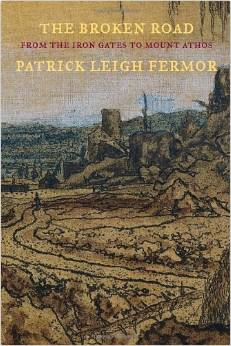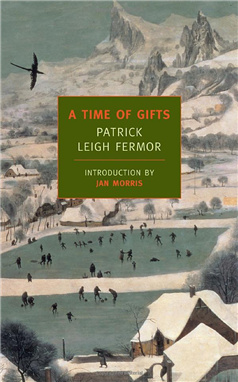 While reading Patrick Leigh Fermor’s retrospective trilogy about the journey he made in his teens, walking from Holland to Istanbul and then Greece, I was struck by the references to what seemed to be an exciting and unusual subsequent life. So, I soon looked for a biography and found this one, by British writer Artemis Cooper, the granddaughter of Leigh Fermor’s good friends and a woman who knew him from when she was a child.
While reading Patrick Leigh Fermor’s retrospective trilogy about the journey he made in his teens, walking from Holland to Istanbul and then Greece, I was struck by the references to what seemed to be an exciting and unusual subsequent life. So, I soon looked for a biography and found this one, by British writer Artemis Cooper, the granddaughter of Leigh Fermor’s good friends and a woman who knew him from when she was a child.
Cooper goes into a little more detail than Leigh Fermor (known by his friends as Paddy) about his childhood, making clear there was a split between his parents and a good deal of neglect from both. Still, he had a happy childhood growing up in a rural setting, and his problems only began with the regimentation of school. Having failed in an academic setting and with the army, Paddy got the idea to go on his fabled walk.
Cooper summarizes the route of this walk, only she reveals the true names of the people he met (he used pseudonyms) and tells us when the stories are invented or conflated. When I read the trilogy I wasn’t aware that any events were invented or conflated, but I should have known that the level of scholarship reflected in the writing was not that of an eighteen-year-old. (Well, I did know, but he wrote the books much later in his life.)

After his journey, Paddy settled in Athens and then Rumania with Princess Balasha Cantacuzene, a fascinating older woman separated from her husband. However, after World War II broke out, he hurried back to England, not realizing how long it would be until he saw her again.
Paddy spent most of the war in Crete working with the resistance. He is famous for kidnapping a German general and removing him to Egypt, an act meant to improve Cretan morale. (A movie, Ill Met by Moonlight starring Dirk Bogarde as Paddy, was made about this feat, but Paddy was unhappy with how far it drifted from the facts.) For the rest of his life, despite the unfortunate political differences that evolved between England and Greece after the war, Paddy was beloved in Crete.

After the war, Paddy lived a gadabout life with many famous friends, only settling down in Greece with his wife Joan in his late middle age. He and Joan had been together 27 years before they married and for many of those years, had an open relationship.
Paddy chose the profession of writer and wrote several books about his travels and adventures. He was a raconteur who demonstrated an impressive range of knowledge and was interested in everything. Apparently very charming and loved by many people, he was not always sensitive to the feelings of others.
This biography is a well written, fascinating, and occasionally funny portrait of a remarkable man. At times, the sheer number of people mentioned made me unsure of who they all were, and there was certainly an assumption that readers would know who was meant. I didn’t always, which made the book a little more difficult to follow, but that was only on occasion.
Related Posts
A Time of Gifts: On Foot to Constantinople: From the Hook of Holland to the Middle Danube
Between the Woods and the Water: On Foot to Constantinople: From the Middle Danube to the Iron Gates



